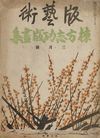Museum of Contemporary Art Tokyo Art Library
Creative Print Magazine Collection
The Art Library at the Museum of Contemporary Art Tokyo has proactively collected Creative Print(Sosaku-Hanga)magazines since its predecessor, the Art Library at the Tokyo Metropolitan Art Museum. The collection mostly consists of magazines donated by the bereaved families of printmakers or print collectors. There are about 500 magazines.
A Creative Print magazine is a publication released sequentially with original print works on sheets of paper or print works bound together. Many such magazines were published with the rise of the Creative Print art movement from the middle of the Meiji period to the beginning of the Showa period.
About Creative Print Magazine

In Japan, print works were created through the division of labor until the Edo period, when three types of artisans each followed one step: a painter drew the painting, a carver carved the wood block, and a printer colored the woodblock and handled the printing.
However, at the beginning of the 1900s, young artists such as Kanae Yamamoto (1882-1946), Hakutei Ishii (1882-1958) and Tsunetomo Morita (1881-1933) proposed the self-drawing, self-carving and self-printing approach. Their proposal led to the development of the Creative Print art movement, which eventually became the main stream of print work creation in Japan. As a result, Creative Print groups and clubs were formed.
Meanwhile, Kanae Yamamoto and others issued magazines featuring their original poems and print works, which helped form the concept that magazines themselves were artworks rooted in society. The new genre of Creative Print magazine was established as a medium for releasing artworks when the replicable creation of print work gained the medium of magazine.
Print work magazines with intense locality were newly issued with the nationwide expansion of the Creative Print art movement. Popular artists joined the movement and released their works in such magazines, such as Sumio Kawakami (1895-1972) and Shiko Munakata (1903-1975).
Creative Print magazines attained prosperity until the early stages of the Showa period. It represented the diverse expression of print works in Modern Japan ranging from the simple touch expressed by a carving knife to the influence of Taisho Modernism and Proletarian art, as well as the inclination toward the abstract and expressionism represented by Koshiro Onchi (1891-1955).
About Collection

The Creative Print (Sosaku-Hanga) magazine collection includes materials that are important in modern Japanese art history, such as “Heitan” issued by the artists including Kanae Yamamoto in the dawning age of Creative Print magazine, and “Tsukuhae” issued by three artists: Koshiro Onchi, Shizuo Fujimori (1891-1943) and Kyokichi Tanaka (1892-1915).
The collection is clearly characterized by the diversity of locality, including “Satoporo” and “Hanga Nagasaki”, which were issued in Hokkaido and Nagasaki, respectively.
Moreover, the collection was enhanced by the generous donation of materials previously owned by artists such as Kanenori Suwa (1897-1932) and Toshiro Maeda (1904-1990).
List
Click on the image to view the high definition image. Click on the image title to display the catalog data.
| Periodical Information | ||||
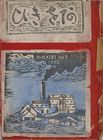 | AOKIBI 1巻3号 | 青甘蔗社 | 昭和7年10月30日 | 1932/10/30 |
| Periodical Information | ||||
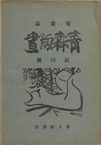 | AOMORIHANGA 1号 | 夢人社 | 昭和14年2月10日 | 1939/02/10 |
| Periodical Information | ||||
 | AOMORIHANGA 19号 | 青森版画会 | 昭和34年7月1日 | 1959/07/01 |
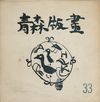 | AOMORIHANGA 33号 | 青森版画会 | 昭和38年5月1日 | 1963/05/01 |
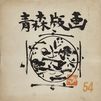 | AOMORIHANGA 54号 | 青森版画会 | 昭和43年11月1日 | 1968/11/01 |
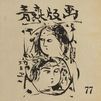 | AOMORIHANGA 77号 | 青森版画会 | 昭和53年7月1日 | 1978/07/01 |
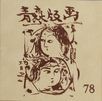 | AOMORIHANGA 78号 | 青森版画会 | 昭和54年6月1日 | 1979/06/01 |
| Periodical Information | ||||
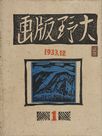 | ONOHANGA 1号 | 大野版画協会 | 昭和8年12月10日 | 1933/12/10 |
 | ONOHANGA 2号 | 大野版画協会 | 昭和9年2月5日 | 1934/02/05 |
 | ONOHANGA 3号 | 大野版画協会 | 昭和9年5月1日 | 1934/05/01 |
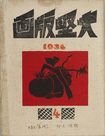 | ONOHANGA 4号 | 大野版画協会 | 昭和9年7月1日 | 1934/07/01 |
| Periodical Information | ||||
 | KAZE 1号 | 風発行所 | 昭和2年10月1日 | 1927/10/01 |
 | KAZE 1号[諏訪文庫] | 風発行所 | 昭和2年10月1日 | 1927/10/01 |
 | KAZE 3号 | 風発行所 | 昭和3年3月5日 | 1928/03/05 |
 | KAZE 4号 | 風発行所 | 昭和3年7月1日 | 1928/07/01 |
| Periodical Information | ||||
 | KAZE 再刊1号[諏訪文庫] | 風発行所 | 昭和4年4月1日 | 1929/04/01 |
 | KAZE 再刊2号[諏訪文庫] | 風発行所 | 昭和4年5月1日 | 1929/05/01 |
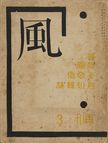 | KAZE 再刊3号 | 風発行所 | 昭和4年6月15日 | 1929/06/15 |
 | KAZE 再刊3号[諏訪文庫] | 風発行所 | 昭和4年6月15日 | 1929/06/15 |
 | KAZE 再刊4号[諏訪文庫] | 風発行所 | 昭和4年9月1日 | 1929/09/01 |
| Periodical Information | ||||
 | KITSUTSUKI 1輯 (創刊号) | 創作版画倶楽部 | 昭和5年7月1日 | 1930/07/01 |
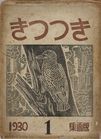 | KITSUTSUKI 1輯 (創刊号)[前田文庫] | 創作版画倶楽部 | 昭和5年7月1日 | 1930/07/01 |
 | KITSUTSUKI 1輯 (創刊号)[諏訪文庫] | 創作版画倶楽部 | 昭和5年7月1日 | 1930/07/01 |
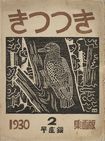 | KITSUTSUKI 2輯 (銀座号) | 創作版画倶楽部 | 昭和5年9月20日 | 1930/09/20 |
 | KITSUTSUKI 2輯 (銀座号)[諏訪文庫] | 創作版画倶楽部 | 昭和5年9月20日 | 1930/09/20 |
 | KITSUTSUKI 2輯 (銀座号)[前田文庫] | 創作版画倶楽部 | 昭和5年9月20日 | 1930/09/20 |
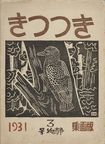 | KITSUTSUKI 3輯 (静物号) | 創作版画倶楽部 | 昭和6年6月28日 | 1931/06/28 |
 | KITSUTSUKI 3輯 (静物号)[前田文庫] | 創作版画倶楽部 | 昭和6年6月28日 | 1931/06/28 |
 | KITSUTSUKI 3輯 (静物号)[前田文庫]A | 創作版画倶楽部 | 昭和6年6月28日 | 1931/06/28 |
 | KITSUTSUKI 3輯 (静物号)[諏訪文庫] | 創作版画倶楽部 | 昭和6年6月28日 | 1931/06/28 |
| Periodical Information | ||||
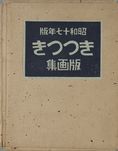 | KITSUTSUKIHANGASHU 昭和17年版 | KITSUTSUKI会 | 昭和17年8月25日 | 1942/08/25 |
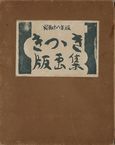 | KITSUTSUKIHANGASHU 昭和18年版 (2輯) | KITSUTSUKI会 | 昭和18年 | 1943 |
| Periodical Information | ||||
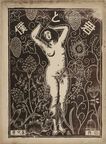 | KIMITOBOKU 2号 | KIMITOBOKU発行所 | 大正12年1月1日 | 1923/01/01 |
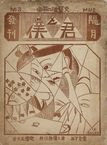 | KIMITOBOKU 3号 | KIMITOBOKU発行所 | 大正12年3月15日 | 1923/03/15 |
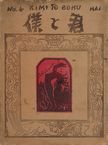 | KIMITOBOKU 4号 | KIMITOBOKU発行所 | 大正12年5月6日 | 1923/05/06 |
 | KIMITOBOKU 5号 | KIMITOBOKU発行所 | 大正12年8月1日 | 1923/08/01 |
| Periodical Information | ||||
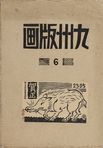 | KYUSHUHANGA 6号 | 九州版画協会 | 昭和10年1月15日 | 1935/01/15 |
 | KYUSHUHANGA 12号 | 九州版画協会 | 昭和11年12月18日 | 1936/12/18 |
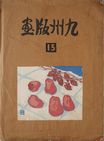 | KYUSHUHANGA 13号 | 九州版画協会 | 昭和12年1月28日 | 1937/01/28 |
 | KYUSHUHANGA 14号 | 九州版画協会 | 昭和12年4月21日 | 1937/04/21 |
 | KYUSHUHANGA 15号 | 九州版画協会 | 昭和12年7月20日 | 1937/07/20 |
 | KYUSHUHANGA 16号 | 九州版画協会 | 昭和12年10月31日 | 1937/10/31 |
 | KYUSHUHANGA 17号 | 九州版画協会 | 昭和13年5月25日 | 1938/05/25 |
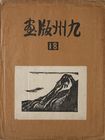 | KYUSHUHANGA 18号 | 九州版画協会 | 昭和13年11月20日 | 1938/11/20 |
| Periodical Information | ||||
 | KYUSHUHANGA 1号 | 橋本富夫 | 昭和22年5月20日 | 1947/05/20 |
 | KYUSHUHANGA 2号 | 橋本富夫 | 昭和23年2月5日 | 1948/02/05 |
| Periodical Information | ||||
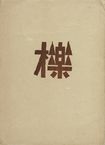 | KUNUGI 7輯 | 信濃創作版画研究会 | 昭和10年8月1日 | 1935/08/01 |
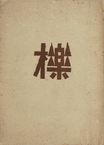 | KUNUGI 8輯 | 信濃創作版画研究会 | 昭和10年12月1日 | 1935/12/01 |
 | KUNUGI 9輯 | 信濃創作版画研究会 | 昭和11年4月1日 | 1936/04/01 |
 | KUNUGI 9輯A | 信濃創作版画研究会 | 昭和11年4月1日 | 1936/04/01 |
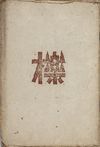 | KUNUGI 10輯 | 信濃創作版画研究会 | 昭和11年7月1日 | 1936/07/01 |
 | KUNUGI 11輯 | 信濃創作版画研究会 | 昭和11年11月1日 | 1936/11/01 |
 | KUNUGI 12輯 (賀状号) | 信濃創作版画研究会 | 昭和12年 | 1937 |
| Periodical Information | ||||
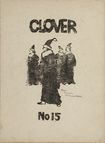 | KUROBA 15号 | 不明 | 大正3年9月1日 | 1914/09/01 |
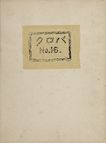 | KUROBA 16号 | 不明 | 不明 |
| Periodical Information | ||||
 | GEIBI 1年1号 (5月号) | 三笠美術店 | 大正3年5月10日 | 1914/05/10 |
 | GEIBI 1年2号 (6月号) | 三笠美術店 | 大正3年6月6日 | 1914/06/06 |
 | GEIBI 1年4号 (9月号) | 三笠美術店 | 大正3年9月5日 | 1914/09/05 |
| Periodical Information | ||||
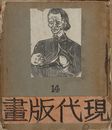 | GENDAIHANGA 14・15号(合本) | 現代版画会 | 昭和24年1月(14号) 昭和25年年1月1日(15号) | 1949/01 |
| Periodical Information | ||||
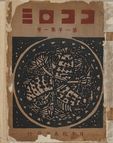 | KOKOROMI 1年1号 | 日本版画会 | 大正2年12月20日 | 1913/12/20 |
| Periodical Information | ||||
 | SATOPORO 1巻1号 | さとぽろ社 | 大正14年6月1日 | 1925/06/01 |
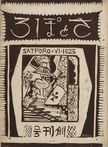 | SATOPORO 1巻1号A | さとぽろ社 | 大正14年6月1日 | 1925/06/01 |
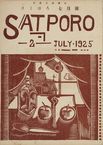 | SATOPORO 1巻2号 | さとぽろ社 | 大正14年7月1日 | 1925/07/01 |
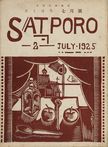 | SATOPORO 1巻2号A | さとぽろ社 | 大正14年7月1日 | 1925/07/01 |
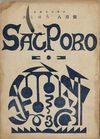 | SATOPORO 1巻3号 | さとぽろ社 | 大正14年8月1日 | 1925/08/01 |
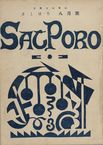 | SATOPORO 1巻3号A | さとぽろ社 | 大正14年8月1日 | 1925/08/01 |
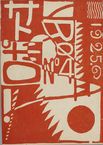 | SATOPORO 1巻4号 | さとぽろ社 | 大正14年9月1日 | 1925/09/01 |
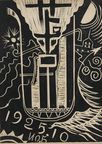 | SATOPORO 1巻5号 | さとぽろ社 | 大正14年10月1日 | 1925/10/01 |
 | SATOPORO 1巻6号 | さとぽろ社 | 大正14年11月1日 | 1925/11/01 |
 | SATOPORO 1巻6号A | さとぽろ社 | 大正14年11月1日 | 1925/11/01 |
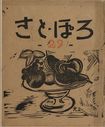 | SATOPORO 29号 | さとぽろ社 | 昭和4年9月20日 | 1929/09/20 |
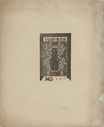 | SATOPORO 29号[諏訪文庫] | さとぽろ社 | 昭和4年9月20日 | 1929/09/20 |
 | SATOPORO 2巻1号 (7号) | さとぽろ社 | 大正15年1月1日 | 1926/01/01 |
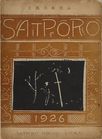 | SATOPORO 3巻4号 (14号) | さとぽろ社 | 大正15年12月20日 | 1926/12/20 |
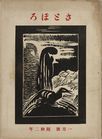 | SATOPORO 4巻1号 (15号) | さとぽろ社 | 昭和2年1月18日 | 1927/01/18 |
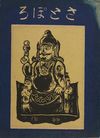 | SATOPORO 4巻2号 (16号) | さとぽろ社 | 昭和2年3月18日 | 1927/03/18 |
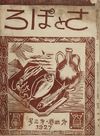 | SATOPORO 4巻3号 (17号) | さとぽろ社 | 昭和2年5月1日 | 1927/05/01 |
| Periodical Information | ||||
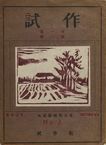 | SHISAKU 1巻2号/通巻2号 (8月号) | 試作社 | 大正14年8月5日 | 1925/08/05 |
 | SHISAKU 3号 (12月号) | 試作社 | 大正14年12月15日 | 1925/12/15 |
 | SHISAKU 2巻1号/通巻4号 (2月号) | 試作社 | 大正15年2月28日 | 1926/02/28 |
| Periodical Information | ||||
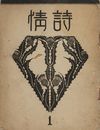 | SHIJO 1輯 (7月号) | 詩情社 | 大正13年7月1日 | 1924/07/01 |
| Periodical Information | ||||
 | JISSENHANGA 1号 | 創作版画倶楽部 | 不明 | |
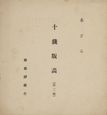 | JISSENHANGA 2号 | 創作版画倶楽部 | 不明 | |
 | JISSENHANGA 4号 | 創作版画倶楽部 | 不明 |
| Periodical Information | ||||
 | SHITOHANGA 1輯A (9月号) | 詩と版画社 | 大正11年9月1日 | 1922/09/01 |
 | SHITOHANGA 1輯B (9月号) | 詩と版画社 | 大正11年9月1日 | 1922/09/01 |
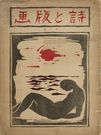 | SHITOHANGA 1輯 (9月号)[渡辺文庫] | 詩と版画社 | 大正11年9月1日 | 1922/09/01 |
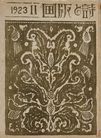 | SHITOHANGA 2輯A (3月号) | 詩と版画社 | 大正12年3月1日 | 1923/03/01 |
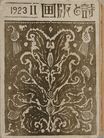 | SHITOHANGA 2輯B (3月号) | 詩と版画社 | 大正12年3月1日 | 1923/03/01 |
 | SHITOHANGA 3輯 | 詩と版画社 | 大正12年7月1日 | 1923/07/01 |
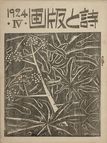 | SHITOHANGA 4輯A (1月号) | 詩と版画社 | 大正13年1月1日 | 1924/01/01 |
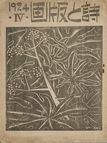 | SHITOHANGA 4輯B (1月号) | 詩と版画社 | 大正13年1月1日 | 1924/01/01 |
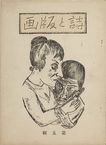 | SHITOHANGA 5輯A (6月号) | 詩と版画社 | 大正13年6月1日 | 1924/06/01 |
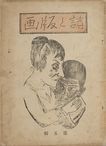 | SHITOHANGA 5輯B (6月号) | 詩と版画社 | 大正13年6月1日 | 1924/06/01 |
 | SHITOHANGA 6輯 (7月号) | 詩と版画社 | 大正13年7月10日 | 1924/07/10 |
 | SHITOHANGA 6輯 (7月号)[諏訪文庫] | 詩と版画社 | 大正13年7月10日 | 1924/07/10 |
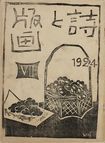 | SHITOHANGA 7輯A (9月号) | 詩と版画社 | 大正13年9月10日 | 1924/09/10 |
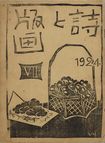 | SHITOHANGA 7輯B (9月号) | 詩と版画社 | 大正13年9月10日 | 1924/09/10 |
 | SHITOHANGA 7輯 (9月号)[渡辺文庫] | 詩と版画社 | 大正13年9月10日 | 1924/09/10 |
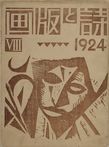 | SHITOHANGA 8輯 (11月号) | 詩と版画社 | 大正13年11月25日 | 1924/11/25 |
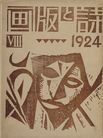 | SHITOHANGA 8輯 (11月号)[諏訪文庫] | 詩と版画社 | 大正13年11月25日 | 1924/11/25 |
 | SHITOHANGA 9輯 (1月号) | 詩と版画社 | 大正14年1月1日 | 1925/01/01 |
 | SHITOHANGA 9輯 (1月号)[諏訪文庫] | 詩と版画社 | 大正14年1月1日 | 1925/01/01 |
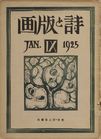 | SHITOHANGA 9輯 (1月号)[渡辺文庫] | 詩と版画社 | 大正14年1月1日 | 1925/01/01 |
 | SHITOHANGA 10輯 (2月号) | 詩と版画社 | 大正14年3月1日 | 1925/03/01 |
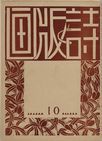 | SHITOHANGA 10輯A (2月号) | 詩と版画社 | 大正14年3月1日 | 1925/03/01 |
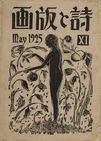 | SHITOHANGA 11輯 (5月号) | 詩と版画社 | 大正14年5月1日 | 1925/05/01 |
 | SHITOHANGA 11輯 (5月号)[諏訪文庫] | 詩と版画社 | 大正14年5月1日 | 1925/05/01 |
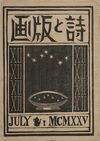 | SHITOHANGA 12輯 (7月号) | 詩と版画社 | 大正14年7月5日 | 1925/07/05 |
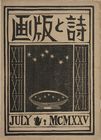 | SHITOHANGA 12輯 (7月号)[諏訪文庫] | 詩と版画社 | 大正14年7月5日 | 1925/07/05 |
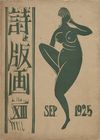 | SHITOHANGA 13輯 (9月号) | 詩と版画社 | 大正14年8月6日 | 1925/08/06 |
 | SHITOHANGA 13輯 (9月号)[諏訪文庫] | 詩と版画社 | 大正14年8月6日 | 1925/08/06 |
| Periodical Information | ||||
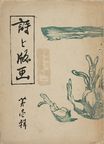 | SHITOHANGA 1輯 | 詩と版画の会 | 昭和9年2月11日 | 1934/02/11 |
| Periodical Information | ||||
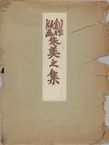 | SHUBI 2冊 | 朱美之会 | 昭和15年8月25日 | 1940/08/25 |
 | SHUBI 5冊 | 朱美之会 | 昭和17年8月25日 | 1942/08/25 |
| Periodical Information | ||||
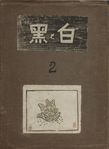 | SHIROTOKURO 第1次2号 | 白と黒社 | 昭和5年3月30日 | 1930/03/30 |
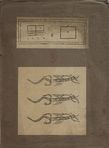 | SHIROTOKURO 第1次3号 | 白と黒社 | 昭和5年5月1日 | 1930/05/01 |
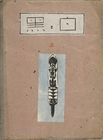 | SHIROTOKURO 第1次5号 | 白と黒社 | 昭和5年7月1日 | 1930/07/01 |
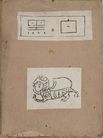 | SHIROTOKURO 第1次6号 | 白と黒社 | 昭和5年9月1日 | 1930/09/01 |
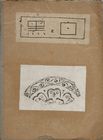 | SHIROTOKURO 第1次7号 | 白と黒社 | 昭和5年10月1日 | 1930/10/01 |
 | SHIROTOKURO 第1次10号 | 白と黒社 | 昭和6年1月1日 | 1931/01/01 |
 | SHIROTOKURO 第1次11号 | 白と黒社 | 昭和6年2月1日 | 1931/02/01 |
 | SHIROTOKURO 第1次12号 | 白と黒社 | 昭和6年3月1日 | 1931/03/01 |
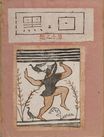 | SHIROTOKURO 第1次13号 | 白と黒社 | 昭和6年4月1日 | 1931/04/01 |
 | SHIROTOKURO 第1次14号 | 白と黒社 | 昭和6年5月1日 | 1931/05/01 |
 | SHIROTOKURO 第1次15号 | 白と黒社 | 昭和6年6月1日 | 1931/06/01 |
 | SHIROTOKURO 第1次16号 | 白と黒社 | 昭和6年7月1日 | 1931/07/01 |
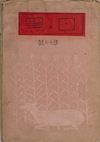 | SHIROTOKURO 第1次17号 | 白と黒社 | 昭和6年9月1日 | 1931/09/01 |
 | SHIROTOKURO 第1次18号 | 白と黒社 | 昭和6年10月1日 | 1931/10/01 |
 | SHIROTOKURO 第1次19号 | 白と黒社 | 昭和6年11月1日 | 1931/11/01 |
 | SHIROTOKURO 第1次20号 | 白と黒社 | 昭和7年1月1日 | 1932/01/01 |
 | SHIROTOKURO 第1次21号 | 白と黒社 | 昭和7年2月1日 | 1932/02/01 |
 | SHIROTOKURO 第1次21号[諏訪文庫] | 白と黒社 | 昭和7年2月1日 | 1932/02/01 |
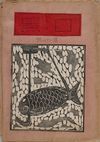 | SHIROTOKURO 第1次22号 | 白と黒社 | 昭和7年3月15日 | 1932/03/15 |
 | SHIROTOKURO 第1次23号 | 白と黒社 | 昭和7年4月25日 | 1932/04/25 |
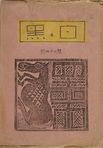 | SHIROTOKURO 第1次24号 | 白と黒社 | 昭和7年6月1日 | 1932/06/01 |
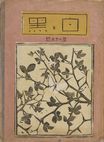 | SHIROTOKURO 第1次25号 | 白と黒社 | 昭和7年7月1日 | 1932/07/01 |
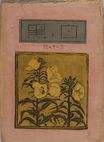 | SHIROTOKURO 第1次26号 | 白と黒社 | 昭和7年7月20日 | 1932/07/20 |
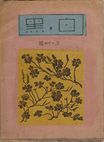 | SHIROTOKURO 第1次27号 | 白と黒社 | 昭和7年8月20日 | 1932/08/20 |
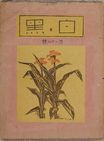 | SHIROTOKURO 第1次28号 | 白と黒社 | 昭和7年10月1日 | 1932/10/01 |
 | SHIROTOKURO 第1次29号 | 白と黒社 | 昭和7年11月1日 | 1932/11/01 |
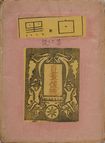 | SHIROTOKURO 第1次30号 | 白と黒社 | 昭和7年12月1日 | 1932/12/01 |
 | SHIROTOKURO 第1次31号 | 白と黒社 | 昭和8年1月1日 | 1933/01/01 |
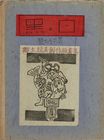 | SHIROTOKURO 第1次32号 | 白と黒社 | 昭和8年2月1日 | 1933/02/01 |
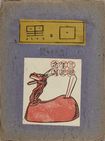 | SHIROTOKURO 第1次33号 | 白と黒社 | 昭和8年3月1日 | 1933/03/01 |
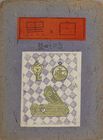 | SHIROTOKURO 第1次34号 | 白と黒社 | 昭和8年4月1日 | 1933/04/01 |
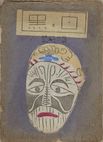 | SHIROTOKURO 第1次35号 | 白と黒社 | 昭和8年5月1日 | 1933/05/01 |
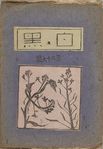 | SHIROTOKURO 第1次36号 | 白と黒社 | 昭和8年6月1日 | 1933/06/01 |
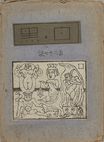 | SHIROTOKURO 第1次37号 | 白と黒社 | 昭和8年7月1日 | 1933/07/01 |
 | SHIROTOKURO 第1次38号 | 白と黒社 | 昭和8年8月1日 | 1933/08/01 |
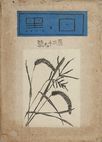 | SHIROTOKURO 第1次39号 | 白と黒社 | 昭和8年9月1日 | 1933/09/01 |
 | SHIROTOKURO 第1次40号 | 白と黒社 | 昭和8年10月1日 | 1933/10/01 |
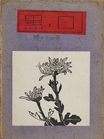 | SHIROTOKURO 第1次42号 | 白と黒社 | 昭和8年12月1日 | 1933/12/01 |
 | SHIROTOKURO 第1次43号 | 白と黒社 | 昭和9年1月1日 | 1934/01/01 |
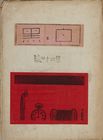 | SHIROTOKURO 第1次44号 | 白と黒社 | 昭和9年2月1日 | 1934/02/01 |
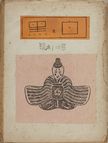 | SHIROTOKURO 第1次45号 | 白と黒社 | 昭和9年3月1日 | 1934/03/01 |
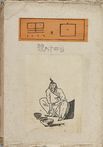 | SHIROTOKURO 第1次46号 | 白と黒社 | 昭和9年4月1日 | 1934/04/01 |
 | SHIROTOKURO 第1次47号 | 白と黒社 | 昭和9年5月1日 | 1934/05/01 |
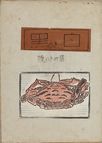 | SHIROTOKURO 第1次48号 | 白と黒社 | 昭和9年6月1日 | 1934/06/01 |
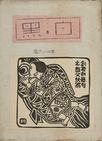 | SHIROTOKURO 第1次49号 | 白と黒社 | 昭和9年7月1日 | 1934/07/01 |
 | SHIROTOKURO 第1次50号 | 白と黒社 | 昭和9年8月5日 | 1934/08/05 |
| Periodical Information | ||||
 | SHIROTOKURO 第2次1号 | 白と黒社 | 昭和10年6月1日 | 1935/06/01 |
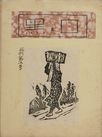 | SHIROTOKURO 第2次2号 | 白と黒社 | 昭和10年7月10日 | 1935/07/10 |
 | SHIROTOKURO 第2次3号 | 白と黒社 | 昭和10年9月1日 | 1935/09/01 |
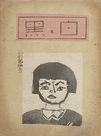 | SHIROTOKURO 第2次4号 | 白と黒社 | 昭和10年11月1日 | 1935/11/01 |
| Periodical Information | ||||
 | SHIROTOKURO 第3次1年1号 (創刊号) | 白と黒社 | 昭和12年3月1日 | 1937/03/01 |
 | SHIROTOKURO 第3次1年1号A (創刊号) | 白と黒社 | 昭和12年3月1日 | 1937/03/01 |
 | SHIROTOKURO 第3次1年2号 (4月号) | 白と黒社 | 昭和12年4月1日 | 1937/04/01 |
 | SHIROTOKURO 第3次1年2号A (4月号) | 白と黒社 | 昭和12年4月1日 | 1937/04/01 |
 | SHIROTOKURO 第3次1年3号 (5月号) | 白と黒社 | 昭和12年5月1日 | 1937/05/01 |
 | SHIROTOKURO 第3次1年3号A (5月号) | 白と黒社 | 昭和12年5月1日 | 1937/05/01 |
 | SHIROTOKURO 第3次1年4号 (6月号) | 白と黒社 | 昭和12年6月1日 | 1937/06/01 |
 | SHIROTOKURO 第3次1年4号A (6月号) | 白と黒社 | 昭和12年6月1日 | 1937/06/01 |
 | SHIROTOKURO 第3次1年5号 (7月号) | 白と黒社 | 昭和12年7月1日 | 1937/07/01 |
| Periodical Information | ||||
 | SHINHANGA 1号 | 新版画集団 | 昭和7年6月20日 | 1932/06/20 |
 | SHINHANGA 4号 | 新版画集団 | 昭和7年9月15日 | 1932/09/15 |
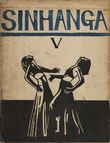 | SHINHANGA 5号 | 新版画集団 | 昭和7年10月10日 | 1932/10/10 |
 | SHINHANGA 6号 | 新版画集団 | 昭和7年11月15日 | 1932/11/15 |
 | SHINHANGA 7号 | 新版画集団 | 昭和8年1月1日 | 1933/01/01 |
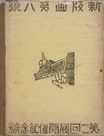 | SHINHANGA 8号 | 新版画集団 | 昭和8年3月1日 | 1933/03/01 |
 | SHINHANGA 9号 | 新版画集団 | 昭和8年6月13日 | 1933/06/13 |
 | SHINHANGA 9号A | 新版画集団 | 昭和8年6月13日 | 1933/06/13 |
 | SHINHANGA 11号 (新年号) | 新版画集団 | 昭和8年12月25日 | 1933/12/25 |
 | SHINHANGA 13号 | 新版画集団 | 昭和9年7月20日 | 1934/07/20 |
 | SHINHANGA 15号 | 新版画集団 | 昭和10年1月1日 | 1935/01/01 |
 | SHINHANGA 16号 | 新版画集団 | 昭和10年4月1日 | 1935/04/01 |
 | SHINHANGA 16号[前田文庫] | 新版画集団 | 昭和10年4月1日 | 1935/04/01 |
 | SHINHANGA 18号 | 新版画集団 | 昭和10年12月1日 | 1935/12/01 |
| Periodical Information | ||||
 | SEIKO 5号 | 刻画晴耕会 | 不明 | |
 | SEIKO 8号 | 刻画晴耕会 | 昭和23年7月30日 | 1948/07/30 |
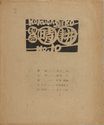 | SEIKO 10号 | 刻画晴耕会 | 昭和24年5月31日 | 1949/05/31 |
| Periodical Information | ||||
 | SEN 1号 (創刊号) | 日本木版画協会 | 昭和5年7月1日 | 1930/07/01 |
 | SEN 1号 (創刊号)[諏訪文庫] | 日本木版画協会 | 昭和5年7月1日 | 1930/07/01 |
| Periodical Information | ||||
 | SEN 2巻3号 (4月号) | 線発行所 | 昭和4年4月20日 | 1929/04/20 |
 | SEN 3巻4号 (1月号) | 線発行所 | 昭和5年1月15日 | 1930/01/15 |
| Periodical Information | ||||
 | TAISHUHANGA 1輯 | 大衆版画協会 | 昭和6年8月1日 | 1931/08/01 |
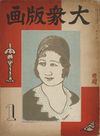 | TAISHUHANGA 1輯[諏訪文庫] | 大衆版画協会 | 昭和6年8月1日 | 1931/08/01 |
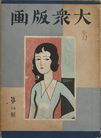 | TAISHUHANGA 2輯 | 大衆版画協会 | 昭和6年11月15日 | 1931/11/15 |
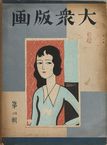 | TAISHUHANGA 2輯[前田文庫] | 大衆版画協会 | 昭和6年11月1日 | 1931/11/01 |
| Periodical Information | ||||
 | DAITOANOHANAGOYOMI 1号 | 創作版画倶楽部 | 昭和18年5月27日 | 1943/05/27 |
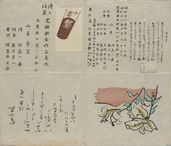 | DAITOANOHANAGOYOMI 2号 | 創作版画倶楽部 | 昭和18年7月8日 | 1943/07/08 |
| Periodical Information | ||||
 | TSUKUHAE 1号 | 洛陽堂 | 大正3年9月18日 | 1914/09/18 |
 | TSUKUHAE 2号 | 洛陽堂 | 大正3年11月10日 | 1914/11/10 |
 | TSUKUHAE 3号 | 洛陽堂 | 大正3年12月16日 | 1914/12/16 |
 | TSUKUHAE 4号 | 洛陽堂 | 大正4年1月28日 | 1915/01/28 |
 | TSUKUHAE 4号A | 洛陽堂 | 大正4年1月28日 | 1915/01/28 |
 | TSUKUHAE 5号 | 洛陽堂 | 大正4年3月7日 | 1915/03/07 |
 | TSUKUHAE 6号 | 洛陽堂 | 大正4年5月5日 | 1915/05/05 |
 | TSUKUHAE 7号[諏訪文庫] | 洛陽堂 | 大正4年10月1日 | 1915/10/01 |
| Periodical Information | ||||
 | TSUGE 1号 (創刊号)[前田文庫] | 黄楊社 | 昭和8年8月20日 | 1933/08/20 |
| Periodical Information | ||||
 | TSUCHIKURE 7号 | 土塊社 | 昭和4年1月31日 | 1929/01/31 |
| Periodical Information | ||||
 | TOGA 2号 | 刀画会同人 | 昭和10年10月1日 | 1935/10/01 |
| Periodical Information | ||||
 | DOSHINSO 8号 | 同心草社 | 大正15年7月27日 | 1926/07/27 |
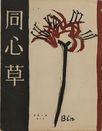 | DOSHINSO 9号 | 同心草社 | 大正15年9月17日 | 1926/09/17 |
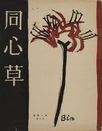 | DOSHINSO 9号A | 同心草社 | 大正15年9月17日 | 1926/09/17 |
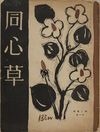 | DOSHINSO 10号 | 同心草社 | 大正15年11月17日 | 1926/11/17 |
 | DOSHINSO 11号 | 同心草社 | 昭和2年2月17日 | 1927/02/17 |
 | DOSHINSO 12号 | 同心草社 | 昭和2年6月5日 | 1927/06/05 |
 | DOSHINSO 13号 | 同心草社 | 昭和2年9月5日 | 1927/09/05 |
 | DOSHINSO 19号 | 同心草社 | 昭和11年3月14日 | 1936/03/14 |
| Periodical Information | ||||
 | NISHINIHONSHINHANGA 1年2輯/2号 | 西日本新版画制作普及協会 | 昭和11年10月5日 | 1936/10/05 |
 | NISHINIHONSHINHANGA 2年1輯/4号 | 西日本新版画制作普及協会 | 昭和12年3月13日 | 1937/03/13 |
 | NISHINIHONSHINHANGA 2年2輯/5号 | 西日本新版画制作(普及)協会 | 昭和12年7月10日 | 1937/07/10 |
 | NISHINIHONSHINHANGA 3年2輯/8輯 | 西日本新版画制作(普及)協会 | 昭和13年7月5日 | 1938/07/05 |
| Periodical Information | ||||
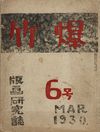 | BAKUCHIKU 6号 (3月号) | 爆竹社 | 昭和5年3月5日 | 1930/03/05 |
 | BAKUCHIKU 7号 (5月号) | 爆竹社 | 昭和5年5月5日 | 1930/05/05 |
| Periodical Information | ||||
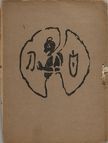 | HAKUTO 準備号1 | 白刀社 | 不明 | |
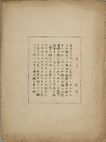 | HAKUTO 明治43年2月号 | 白刀社 | 明治43年2月1日 | 1910/02/01 |
 | HAKUTO 1号 | 白刀社 | 明治43年11月18日 | 1910/11/18 |
| Periodical Information | ||||
 | HATOBUE 2輯 | 鳩笛社 | 昭和9年4月30日 | 1934/04/30 |
| Periodical Information | ||||
 | HAN 1号 (創刊号) | 刀画房 | 昭和2年12月15日 | 1927/12/15 |
 | HAN 2号 | 刀画房 | 昭和3年1月30日 | 1928/01/30 |
 | HAN 2号A | 刀画房 | 昭和3年1月30日 | 1928/01/30 |
 | HAN 3号 | 刀画房 | 昭和3年3月25日 | 1928/03/25 |
 | HAN 4号 | 刀画房 | 昭和3年7月15日 | 1928/07/15 |
 | HAN 5号 | 刀画房 | 昭和3年11月10日 | 1928/11/10 |
 | HAN 6号 | 刀画房 | 昭和3年12月23日 | 1928/12/23 |
 | HAN 7号 | 刀画房 | 昭和4年2月5日 | 1929/02/05 |
 | HAN 7号A | 刀画房 | 昭和4年2月5日 | 1929/02/05 |
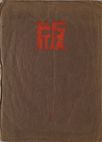 | HAN 8号 | 刀画房 | 昭和4年7月11日 | 1929/07/11 |
 | HAN 8号A | 刀画房 | 昭和4年7月11日 | 1929/07/11 |
| Periodical Information | ||||
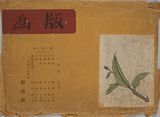 | HANGA 創刊号 | 版画社(野村俊彦編) | 昭和2年1月1日 | 1927/01/01 |
| Periodical Information | ||||
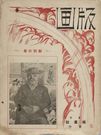 | HANGA 1巻1号 (創刊の巻) | 版画社 | 大正10年11月1日 | 1921/11/01 |
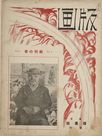 | HANGA 1巻1号A (創刊の巻) | 版画社 | 大正10年11月1日 | 1921/11/01 |
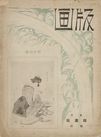 | HANGA 1巻2号 (新年の巻) | 版画社 | 大正11年1月1日 | 1922/01/01 |
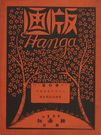 | HANGA 1巻3号 (春の巻) | 版画社 | 大正11年4月20日 | 1922/04/20 |
 | HANGA 1巻3号 (春の巻)[諏訪文庫] | 版画社 | 大正11年4月20日 | 1922/04/20 |
| Periodical Information | ||||
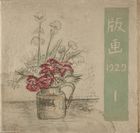 | HANGA 1号 | 素描社 | 昭和4年2月1日 | 1929/02/01 |
| Periodical Information | ||||
 | HANGAUNDO 2巻1号 (3月号) | 日本版画運動協会 | 昭和25年1月20日 | 1950/01/20 |
| Periodical Information | ||||
 | HANGACLUB 1年1号[前田文庫] | 創作版画倶楽部 | 昭和4年4月15日 | 1929/04/15 |
 | HANGACLUB 1年2号 (5月号)[諏訪文庫] | 創作版画倶楽部 | 昭和4年5月15日 | 1929/05/15 |
 | HANGACLUB 1年3号[前田文庫] | 創作版画倶楽部 | 昭和4年5月21日 | 1929/05/21 |
 | HANGACLUB 1年5号 | 創作版画倶楽部 | 昭和4年9月20日 | 1929/09/20 |
 | HANGACLUB 1年5号[前田文庫] | 創作版画倶楽部 | 昭和4年9月20日 | 1929/09/20 |
 | HANGACLUB 1年6号[前田文庫] | 創作版画倶楽部 | 昭和4年12月1日 | 1929/12/01 |
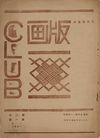 | HANGACLUB 2年1号[諏訪文庫] | 創作版画倶楽部 | 昭和5年1月1日 | 1930/01/01 |
 | HANGACLUB 2年1号[前田文庫] | 創作版画倶楽部 | 昭和5年1月1日 | 1930/01/01 |
 | HANGACLUB 2年2号[前田文庫] | 創作版画倶楽部 | 昭和5年2月10日 | 1930/02/10 |
 | HANGACLUB 3年1号[前田文庫] | 創作版画倶楽部 | 昭和6年8月5日 | 1931/08/05 |
 | HANGACLUB 3年1号[前田文庫]A | 創作版画倶楽部 | 昭和6年8月5日 | 1931/08/05 |
 | HANGACLUB 3年2号[前田文庫] | 創作版画倶楽部 | 昭和6年9月10日 | 1931/09/10 |
 | HANGACLUB 3年3号[前田文庫] | 創作版画倶楽部 | 昭和6年10月10日 | 1931/10/10 |
 | HANGACLUB 3年4号[前田文庫] | 創作版画倶楽部 | 昭和6年11月10日 | 1931/11/10 |
 | HANGACLUB 3年5号[前田文庫] | 創作版画倶楽部 | 昭和6年12月10日 | 1931/12/10 |
 | HANGACLUB 4年1号[前田文庫] | 創作版画倶楽部 | 昭和7年1月15日 | 1932/01/15 |
 | HANGACLUB 4年2号[前田文庫] | 創作版画倶楽部 | 昭和7年2月20日 | 1932/02/20 |
 | HANGACLUB 4年3号[前田文庫] | 創作版画倶楽部 | 昭和7年3月28日 | 1932/03/28 |
| Periodical Information | ||||
 | HANGAKENKYU 1巻1号 (創刊号) | 日本版画研究会 | 昭和7年3月15日 | 1932/03/15 |
 | HANGAKENKYU 1巻1号A (創刊号) | 日本版画研究会 | 昭和7年3月15日 | 1932/03/15 |
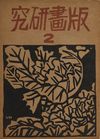 | HANGAKENKYU 2号 | 日本版画研究会 | 昭和9年3月5日 | 1934/03/05 |
 | HANGAKENKYU 2号[前田文庫] | 日本版画研究会 | 昭和9年3月5日 | 1934/03/05 |
| Periodical Information | ||||
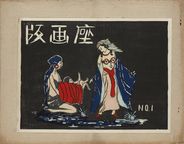 | HANGAZA 1輯 | 版画座画房 | 昭和7年11月1日 | 1932/11/01 |
| Periodical Information | ||||
 | HANGAZA 2年5号/7号 | 静岡画人協会 | 昭和8年5月5日 | 1933/05/05 |
 | HANGAZA 2年6号/第8輯 | 静岡版画人協会 | 昭和8年6月4日 | 1933/06/04 |
 | HANGAZA 2年7号/通巻9号 | 静岡版画人協会 | 昭和8年7月20日 | 1933/07/20 |
 | HANGAZA 2年8号/通巻10号 | 静岡版画人協会 | 昭和8年8月25日 | 1933/08/25 |
 | HANGAZA 2年9号/通巻11号 | 静岡版画人協会 | 昭和8年9月20日 | 1933/09/20 |
 | HANGAZA 2年10号/通巻12号 | 静岡版画人協会 | 昭和8年10月10日 | 1933/10/10 |
 | HANGAZA 2年14号 | 静岡版画人協会 | 昭和8年12月18日 | 1933/12/18 |
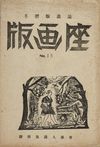 | HANGAZA 3年15号 | 静岡版画人協会 | 昭和9年3月15日 | 1934/03/15 |
 | HANGAZA [第3年]16号 | 静岡版画人協会 | 昭和9年6月27日 | 1934/06/27 |
| Periodical Information | ||||
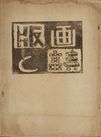 | HANGATOSHI 3輯 | 段塚青一 | 昭和8年5月10日 | 1933/05/10 |
| Periodical Information | ||||
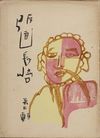 | HANGANAGASAKI 2輯 | 版画長崎の会 | 昭和9年4月10日 | 1934/04/10 |
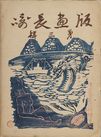 | HANGANAGASAKI 3輯 | 版画長崎の会 | 昭和9年5月23日 | 1934/05/23 |
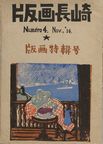 | HANGANAGASAKI 4輯 | 版画長崎の会 | 昭和9年11月10日 | 1934/11/10 |
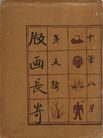 | HANGANAGASAKI 5輯 | 版画長崎の会 | 昭和10年8月13日 | 1935/08/13 |
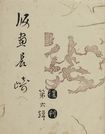 | HANGANAGASAKI 復刊6輯 | 版画長崎の会 | 昭和28年7月20日 | 1953/07/20 |
 | HANGANAGASAKI 終刊号 | 版画長崎の会 | 昭和38年1月1日 | 1963/01/01 |
| Periodical Information | ||||
 | HANGI 復刊1号 | かばら画房 | 昭和33年8月1日 | 1958/08/01 |
 | HANGI 復刊2号 | かばら画房 | 昭和34年5月1日 | 1959/05/01 |
| Periodical Information | ||||
 | HANSO 1輯 | 錆刀社 | 昭和8年2月20日 | 1933/02/20 |
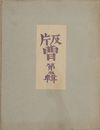 | HANSO 3輯 | 錆刀社 | 昭和9年1月1日 | 1934/01/01 |
| Periodical Information | ||||
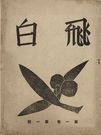 | HIHAKU 1巻1号 | 飛白社 | 昭和9年7月15日 | 1934/07/15 |
 | HIHAKU 1巻2号 | 飛白社 | 昭和9年9月10日 | 1934/09/10 |
| Periodical Information | ||||
 | BUNKA 8号 | 富岳本社 | 昭和22年7月1日 | 1947/07/01 |
| Periodical Information | ||||
 | HEITAN 5号 | 平旦社 | 明治39年4月20日 | 1906/04/20 |
| Periodical Information | ||||
 | HOSUN 1号 (創刊号) | 方寸発行所 | 昭和21年5月1日 | 1946/05/01 |
 | HOSUN 2号 (7・9月合併号) | 方寸発行所 | 昭和21年9月5日 | 1946/09/05 |
 | HOSUN 3号 (1月号) | 方寸発行所 | 昭和22年1月1日 | 1947/01/01 |
| Periodical Information | ||||
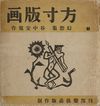 | HOSUNHANGA 1号 | 創作版画倶楽部 | 昭和8年2月8日 | 1933/02/08 |
| Periodical Information | ||||
 | HORI 1号 | 佐々木文具店 | 大正3年11月10日 | 1914/11/10 |
| Periodical Information | ||||
 | BOKUSHIN 2巻5号 | 牧神詩社 | 昭和5年8月15日 | 1930/08/15 |
| Periodical Information | ||||
 | HORITOSURI 6号 | 版画研究会 | 昭和7年12月1日 | 1932/12/01 |
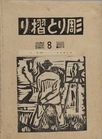 | HORITOSURI 8号 | 版画研究会 | 昭和8年6月20日 | 1933/06/20 |
| Periodical Information | ||||
 | MAHANI 1号 | 靖文社 | 昭和23年3月15日 | 1948/03/15 |
 | MAHANI 1号A | 靖文社 | 昭和23年3月15日 | 1948/03/15 |
 | MAHANI 2号 | 靖文社 | 昭和23年9月1日 | 1948/09/01 |
 | MAHANI 3号 | 靖文社 | 昭和24年3月17日 | 1949/03/17 |
 | MAHANI 4号 | 靖文社 | 昭和23年8月1日 | 1948/08/01 |
 | MAHANI 5号 | 靖文社 | 昭和24年12月1日 | 1949/12/01 |
 | MAHANI 5号A | 靖文社 | 昭和24年12月1日 | 1949/12/01 |
| Periodical Information | ||||
 | MINATO 1輯[諏訪文庫] | 「港」社 | 大正15年12月12日 | 1926/12/12 |
 | MINATO 2号[諏訪文庫] | 「港」社 | 昭和2年2月1日 | 1927/02/01 |
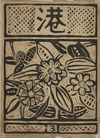 | MINATO 3輯 | 警醒社 | 昭和2年3月17日 | 1927/03/17 |
 | MINATO 3輯[諏訪文庫] | 警醒社 | 昭和2年3月17日 | 1927/03/17 |
 | MINATO 4輯 | 警醒社 | 昭和2年5月10日 | 1927/05/10 |
 | MINATO 4輯A | 警醒社 | 昭和2年5月10日 | 1927/05/10 |
 | MINATO 5輯 | 警醒社 | 昭和2年7月15日 | 1927/07/15 |
 | MINATO 5輯A | 警醒社 | 昭和2年7月15日 | 1927/07/15 |
| Periodical Information | ||||
 | MUTSUGOMA 1輯 (創刊号) | 夢人社 | 昭和8年1月30日 | 1933/01/30 |
 | MUTSUGOMA 2輯 | 夢人社 | 昭和8年2月28日 | 1933/02/28 |
 | MUTSUGOMA 3号 | 夢人社 | 昭和8年3月30日 | 1933/03/30 |
 | MUTSUGOMA 4号 | 夢人社 | 昭和8年5月5日 | 1933/05/05 |
 | MUTSUGOMA 5輯 | 夢人社 | 昭和8年6月10日 | 1933/06/10 |
 | MUTSUGOMA 6輯 | 夢人社 | 昭和8年7月25日 | 1933/07/25 |
 | MUTSUGOMA 7輯 | 夢人社 | 昭和8年10月10日 | 1933/10/10 |
 | MUTSUGOMA 8集 | 夢人社 | 昭和9年1月10日 | 1934/01/10 |
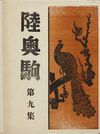 | MUTSUGOMA 9集 | 夢人社 | 昭和9年2月20日 | 1934/02/20 |
 | MUTSUGOMA 10集 | 夢人社 | 昭和9年3月29日 | 1934/03/29 |
 | MUTSUGOMA 11集 | 夢人社 | 昭和9年4月20日 | 1934/04/20 |
 | MUTSUGOMA 12集 | 夢人社 | 昭和9年5月25日 | 1934/05/25 |
 | MUTSUGOMA 13集 | 夢人社 | 昭和9年6月30日 | 1934/06/30 |
 | MUTSUGOMA 14集 | 夢人社 | 昭和9年9月15日 | 1934/09/15 |
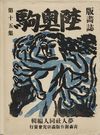 | MUTSUGOMA 15集 | 夢人社 | 昭和9年11月15日 | 1934/11/15 |
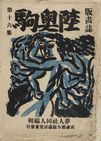 | MUTSUGOMA 16集 | 夢人社 | 昭和9年12月30日 | 1934/12/30 |
 | MUTSUGOMA 19号 | 夢人社 | 昭和10年10月30日 | 1935/10/30 |
 | MUTSUGOMA 20号 | 夢人社 | 昭和10年12月30日 | 1935/12/30 |
| Periodical Information | ||||
 | MURANOHANGA 4号 | 村の版画社 | 大正14年7月10日 | 1925/07/10 |
 | MURANOHANGA 4号(通巻14号)[諏訪文庫] | 村の版画社 | 昭和7年 | 1932 |
 | MURANOHANGA 5号 | 村の版画社 | 大正14年9月10日 | 1925/09/10 |
 | MURANOHANGA 6号 | 村の版画社 | 大正14年11月20日 | 1925/11/20 |
 | MURANOHANGA 6号[諏訪文庫] | 村の版画社 | 大正14年11月10日 | 1925/11/10 |
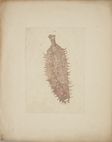 | MURANOHANGA 6号[諏訪文庫]A | 村の版画社 | 大正14年11月10日 | 1925/11/10 |
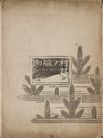 | MURANOHANGA 7号 | 村の版画社 | 大正15年1月6日 | 1926/01/06 |
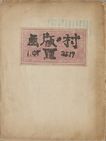 | MURANOHANGA 8号 | 村の版画社 | 昭和4年1月25日 | 1929/01/25 |
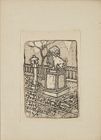 | MURANOHANGA 9号[諏訪文庫] | 村の版画社 | 昭和4年 | 1929 |
 | MURANOHANGA 10巻 | 村の版画社 | 昭和4年4月30日 | 1929/04/30 |
 | MURANOHANGA 10巻[諏訪文庫] | 村の版画社 | 昭和4年4月30日 | 1929/04/30 |
 | MURANOHANGA 1号(通巻12号)[諏訪文庫] | 村の版画社 | 昭和7年1月1日 | 1932/01/01 |
 | MURANOHANGA 3号(通巻13号)[諏訪文庫]/a> | 村の版画社 | 昭和7年3月1日 | 1932/03/01 |
 | MURANOHANGA 6号 (通巻16号) | 村の版画社 | 昭和7年 | 1932 |
| Periodical Information | ||||
 | MOKUSHO 1巻1号 | アート倶楽部 | 大正3年11月20日 | 1914/11/20 |
 | MOKUSHO 1巻3号 | アート倶楽部 | 大正4年2月1日 | 1915/02/01 |
 | MOKUSHO 1巻4号 | アート倶楽部 | 大正4年3月1日 | 1915/03/01 |
| Periodical Information | ||||
 | MOKUHAN 5集 | 弘前版画の会 | 昭和24年5月25日 | 1949/05/25 |
 | MOKUHAN 6集 | 弘前版画の会 | 昭和24年7月1日 | 1949/07/01 |
| Periodical Information | ||||
 | YAKUSHAE 1年1編 | 似顔洞 | 大正4年6月1日 | 1915/06/01 |
 | YAKUSHAE 1年2編 | 似顔洞 | 大正4年7月1日 | 1915/07/01 |
 | YAKUSHAE 1年3編 | 似顔洞 | 大正4年8月1日 | 1915/08/01 |
 | YAKUSHAE 1年4編 | 似顔洞 | 大正4年10月1日 | 1915/10/01 |
 | YAKUSHAE 1年5編 | 似顔洞 | 大正4年11月1日 | 1915/11/01 |
| Periodical Information | ||||
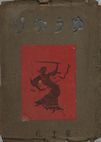 | YUKARI 1輯 | 童土社 | 昭和6年1月1日 | 1931/01/01 |
 | YUKARI 8輯 | 童土社 | 昭和7年5月5日 | 1932/05/05 |
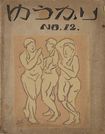 | YUKARI 12輯 | 童土社 | 昭和7年12月15日 | 1932/12/15 |
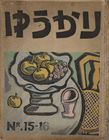 | YUKARI 15・16号 | 童土社 | 昭和8年7月5日 | 1933/07/05 |
 | YUKARI 21号 | 童土社 | 昭和9年9月10日 | 1934/09/10 |
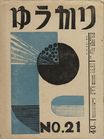 | YUKARI 21号A | 童土社 | 昭和9年9月10日 | 1934/09/10 |
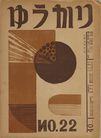 | YUKARI 22号 | 童土社 | 昭和9年10月10日 | 1934/10/10 |
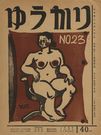 | YUKARI 23号 | 童土社 | 昭和9年11月11日 | 1934/11/11 |
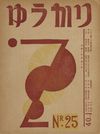 | YUKARI 25号 | 童土社 | 昭和10年2月18日 | 1935/02/18 |
 | YUKARI 26号 | 童土社 | 昭和10年3月31日 | 1935/03/31 |
 | YUKARI 30号 | 童土社 | 昭和10年8月5日 | 1935/08/05 |
| Periodical Information | ||||
 | YODOHANGASHU 1-2591号 (昭和6年)[前田文庫] | 羊土社 | 昭和6年6月6日 | 1931/06/06 |
 | YODOHANGASHU 2-2592号 (昭和7年)[前田文庫] | 羊土社 | 昭和7年12月10日 | 1932/12/10 |
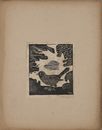 | YODOHANGASHU 2-2592号 (昭和7年)[前田文庫]A | 羊土社 | 昭和7年12月10日 | 1932/12/10 |
 | YODOHANGASHU 2-2593号 (昭和8年)[前田文庫] | 羊土社 | 昭和8年 | 1933 |
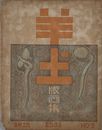 | YODOHANGASHU 2-2593号 (昭和8年)[前田文庫]A | 羊土社 | 昭和8年 | 1933 |
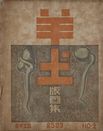 | YODOHANGASHU 2-2593号 (昭和8年)[前田文庫]B | 羊土社 | 昭和8年 | 1933 |
 | YODOHANGASHU 端本[前田文庫] | 羊土社 | 不明 |
| Periodical Information | ||||
 | Hanga 1輯 | HANGA NO IE | 大正13年2月1日 | 1924/02/01 |
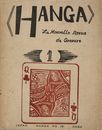 | Hanga 1輯[諏訪文庫] | HANGA NO IE | 大正13年2月1日 | 1924/02/01 |
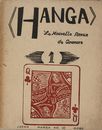 | Hanga 1輯[諏訪文庫]A | HANGA NO IE | 大正13年2月1日 | 1924/02/01 |
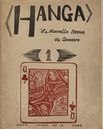 | Hanga 1輯[渡辺文庫] | HANGA NO IE | 大正13年2月1日 | 1924/02/01 |
 | Hanga 2輯 | HANGA NO IE | 大正13年5月20日 | 1924/05/20 |
 | Hanga 2輯A | HANGA NO IE | 大正13年5月20日 | 1924/05/20 |
 | Hanga 3輯 | HANGA NO IE | 大正13年9月15日 | 1924/09/15 |
 | Hanga 4輯 | HANGA NO IE | 大正13年12月5日 | 1924/12/05 |
 | Hanga 4輯A | HANGA NO IE | 大正13年12月5日 | 1924/12/05 |
 | Hanga 4輯[渡辺文庫] | HANGA NO IE | 大正13年12月5日 | 1924/12/05 |
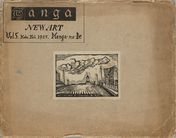 | Hanga 5輯 | HANGA NO IE | 大正14年2月20日 | 1925/02/20 |
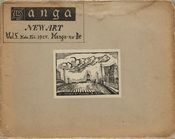 | Hanga 5輯A | HANGA NO IE | 大正14年2月20日 | 1925/02/20 |
 | Hanga 5輯[諏訪文庫] | HANGA NO IE | 大正14年2月20日 | 1925/02/20 |
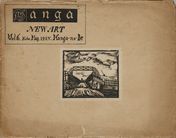 | Hanga 6輯 | HANGA NO IE | 大正14年6月1日 | 1925/06/01 |
 | Hanga 6輯A | HANGA NO IE | 大正14年6月1日 | 1925/06/01 |
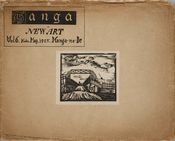 | Hanga 6輯[諏訪文庫] | HANGA NO IE | 大正14年6月1日 | 1925/06/01 |
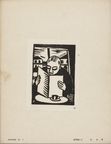 | Hanga 6輯[諏訪文庫]A | HANGA NO IE | 大正14年6月1日 | 1925/06/01 |
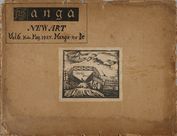 | Hanga 6輯[前田文庫] | HANGA NO IE | 大正14年6月1日 | 1925/06/01 |
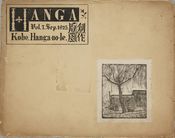 | Hanga 7輯 | HANGA NO IE | 大正14年10月10日 | 1925/10/10 |
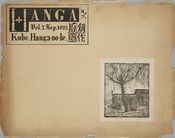 | Hanga 7輯A | HANGA NO IE | 大正14年10月10日 | 1925/10/10 |
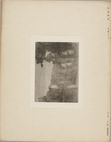 | Hanga 7輯[諏訪文庫] | HANGA NO IE | 大正14年10月10日 | 1925/10/10 |
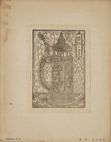 | Hanga 7輯[前田文庫] | HANGA NO IE | 大正14年10月10日 | 1925/10/10 |
 | Hanga 8輯 | HANGA NO IE | 大正14年12月30日 | 1925/12/30 |
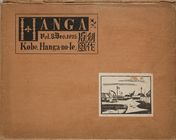 | Hanga 8輯A | HANGA NO IE | 大正14年12月30日 | 1925/12/30 |
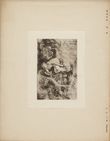 | Hanga 8輯[諏訪文庫] | HANGA NO IE | 大正14年12月30日 | 1925/12/30 |
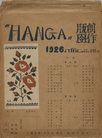 | Hanga 9・10輯 | HANGA NO IE | 大正15年7月5日 | 1926/07/05 |
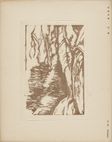 | Hanga 9・10輯[諏訪文庫] | HANGA NO IE | 大正15年7月5日 | 1926/07/05 |
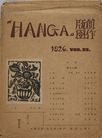 | Hanga 11輯 | HANGA NO IE | 大正15年11月25日 | 1926/11/25 |
 | Hanga 11輯[諏訪文庫] | HANGA NO IE | 大正15年11月25日 | 1926/11/25 |
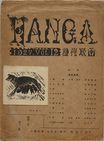 | Hanga 12輯 | HANGA NO IE | 昭和2年10月20日 | 1927/10/20 |
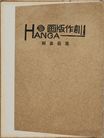 | Hanga 13輯 | HANGA NO IE | 昭和3年3月31日 | 1928/03/31 |
 | Hanga 13輯A | HANGA NO IE | 昭和3年3月31日 | 1928/03/31 |
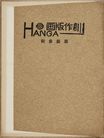 | Hanga 13輯[諏訪文庫] | HANGA NO IE | 昭和3年3月31日 | 1928/03/31 |
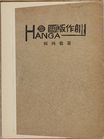 | Hanga 14輯 | HANGA NO IE | 昭和3年11月3日 | 1928/11/03 |
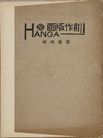 | Hanga 14輯A | HANGA NO IE | 昭和3年11月3日 | 1928/11/03 |
 | Hanga 14輯[渡辺文庫] | HANGA NO IE | 昭和3年11月3日 | 1928/11/03 |
 | Hanga 14輯[諏訪文庫] | HANGA NO IE | 昭和3年11月3日 | 1928/11/03 |
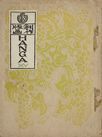 | Hanga 15輯 | HANGA NO IE | 昭和5年3月25日 | 1930/03/25 |
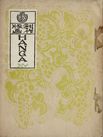 | Hanga 15輯[諏訪文庫] | HANGA NO IE | 昭和5年3月25日 | 1930/03/25 |
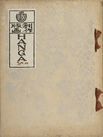 | Hanga 16輯 | HANGA NO IE | 昭和5年4月3日 | 1930/04/03 |
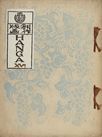 | Hanga 16輯[諏訪文庫] | HANGA NO IE | 昭和5年4月3日 | 1930/04/03 |
 | Hanga 16輯[前田文庫] | HANGA NO IE | 昭和5年4月3日 | 1930/04/03 |
| Periodical Information | ||||
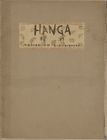 | Hanga 1巻 | 版画の家 | 大正14年5月1日 | 1925/05/01 |
| Periodical Information | ||||
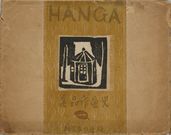 | Hanga 児童作品集 1輯 | 版画の家 | 大正14年6月10日 | 1925/06/10 |
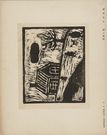 | Hanga 児童作品集 1輯[諏訪文庫] | 版画の家 | 大正14年6月10日 | 1925/06/10 |
| Periodical Information | ||||
 | Nevelon 1号 | モリス社 | 昭和3年4月5日 | 1928/04/05 |
 | Nevelon 1号A | モリス社 | 昭和3年4月5日 | 1928/04/05 |
Notes
・Materials in the form of a pamphlet are shown in the way it is spread and facing in the same direction to reproduce the status of the material. Therefore, letters and/or figures may be shown upside down if text starts with both a front cover and a back cover of the material.
・Displayed pages of a material in the form of a pamphlet start with a front cover as a rule. However, if it is difficult to tell which side is the front cover or the pages following the front cover are turned upside down, the sequence of showing was decided in accordance with the standards of the Art Library at the Museum of Contemporary Art Tokyo.
・Ask at the librarian desk if you wish to make photocopies of images in the materials.(Black and White: 30 yen per copy; Colour: 100 yen per copy)
Using data of the materials requires the approval of the Art Library at the Museum of Contemporary Art Tokyo. We accept no responsibility for any issues arising from unauthorized use.
















